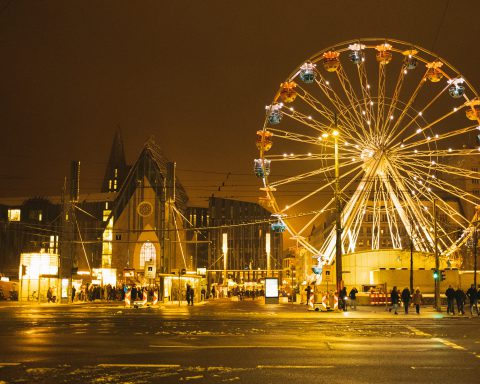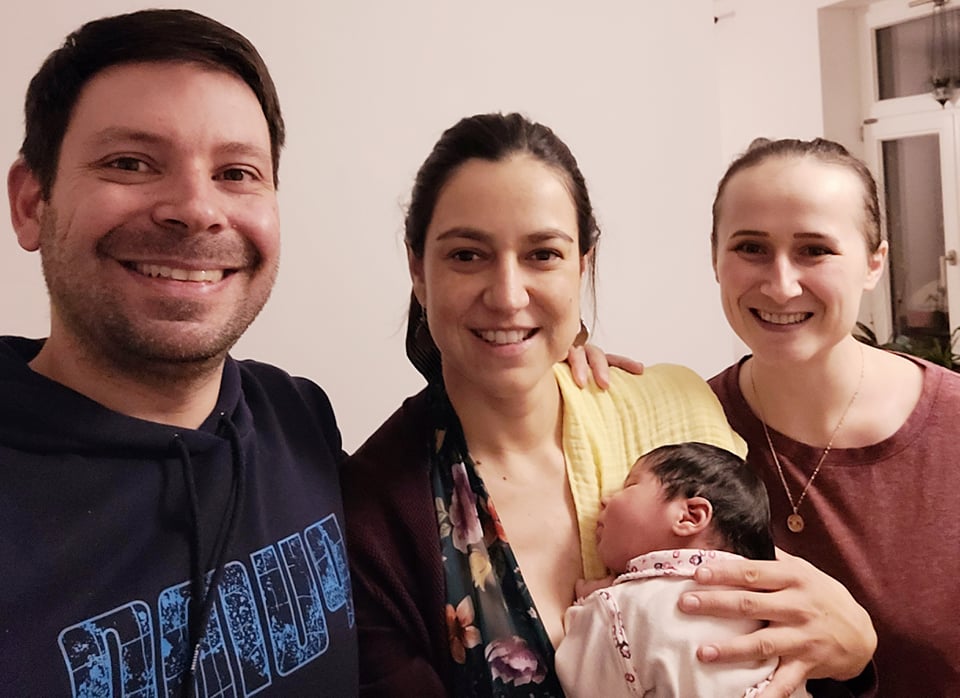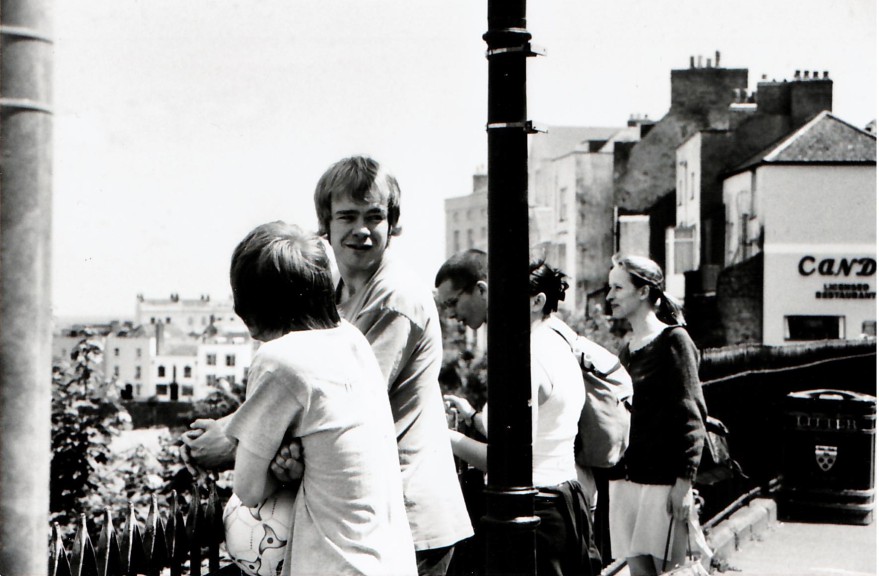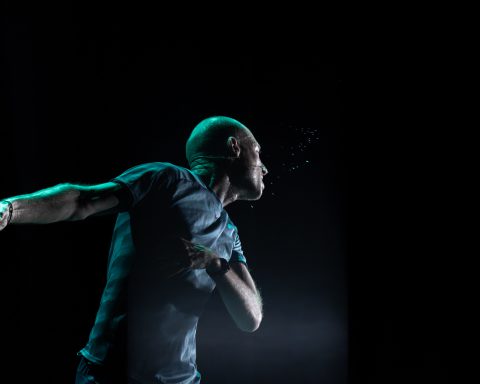euro-scene Leipzig is back and under new direction. Christian Watty’s choice of opening with Trajal Harrell’s The Köln Concert was no accident. It was the perfect piece to set the tone for the way forward.
When I talked to Christian last year, he said he wanted to shake things up a bit. His aim was to give a platform to young and experimental works that reflect where we are at this point in time. I was excited and curious as to how this would materialise. For 30 years euro-scene has been successfully telling the story of European dance and theatre by restaging old works and giving place to newer ones. My only disappointment for the 2021 festival was that I didn’t have time to see more pieces.
I came away from euro-scene with exactly what I wanted: lots to think about.
I have to admit I am still having re-entry difficulties. The performance of The Köln Concert was sold out. Of course, there were empty seats between the audience members, and everyone was checked for vaccination or recovery, but while I’d normally have a glass of wine or two and discuss what I’d seen with other audience members, I found myself slipping out and going to have a pizza on my own. I did have a glass of wine and my usual conversation turned into thinking and googling. That part typically starts later in my writing process.
But that’s where we are right now, each at some stage of coping with the pandemic we currently find ourselves in.
And it’s this process and our feeling of vulnerability that choreographer Trajal Harrell wanted to find a place for. He wants us to know it’s ok. Like grieving for a lost loved one, there is no right way to do this. We just have to be there for each other.
one sees the world from their own eyes
The minimal stage was set with socially distanced piano benches. The piece began with a recording of a single piano. Alone on stage, Trajal donned a piece of fabric that started as a skirt and morphed into an apron. Barefoot, he rocked and swayed and held up his arms. His hand gestures reminded me of a long history of Southern black church-going women.
He is from Georgia and I am from North Carolina. As a white woman in a sea of white faces, I felt a little uncomfortable. Was I projecting this because he was black or was his intention to show the strength of a long line of African American women who had, and continue to endure so much?
In a 2016 interview with Philip Bither at the Walker in Minneapolis, Trajal recounted an experience he had in San Francisco very early in his career.
An audience member came up to him after a performance and said, “I loved your work! I loved how you talked about the black man’s anger.” Trajal was shocked at the comment because he was not dealing with race or anger at all. “Whenever I make a work and I come on stage, that shit is there. I don’t have to do anything. It’s done. That’s what I’ve been born into. I don’t have to do very much. And I think that my being and doing in the places and spaces I’m going into is breaking down things by the very fact that I’m in the room. And I’m still the only one in the room a lot of times.”
Trajal’s authentic voice
He doesn’t feel he has to have a default agenda, but rather work on a project-to-project basis. As long as Trajal keeps his work honest, he knows all the things that make him him will come through: his love of history, his dedication to feminism, and his willingness to see things from an array of perspectives rather than his alone. After watching the interview, I felt I had no reason to feel uncomfortable. I had seen what he wanted me to.
This desire to juxtapose viewpoints also explains his musical selection. I had been perplexed by his use of Joni Mitchell. Her voice seemed alien in conjunction with his movement choices. But then, she’s not someone I typically listen to. Once I did a little digging, it made more sense to me. The songs were from her Blue album. In 1970 the Canadian singer-songwriter had gone to Europe and just lived.
It’s almost as if she was doing all the things we couldn’t because we were in lockdown.
David Cavanagh, in the March 2019 edition of MOJO magazine could not have known what March of 2020 would bring when he described Mitchel. “Like a backpacker with the human heart as her map, she roamed and explored until there was nowhere to go but home. The calendar passed from spring to December.”
alone in the dark
One by one, dancers took to the stage and sat on the piano benches. The movements were simple: one arm swinging backwards and forwards, sometimes in sync, sometimes in windshield wiper mode. The dancers stayed long enough to have a good look at them but left when there were more than two. Each is distinct in dress, size, shape, and color.
The piano songs on the album played like we were listening to an album. Straight forward. No mixing or fading into each other. “The songs were vulnerable, mischievous, tearful, horny, bereft, heartsick, and more. She sang them as if they were just occurring to her, spilling out her daydreams in fresh diary ink.” At some point, the singing stopped and Keith Jarrett’s The Köln Concert began to soothe me.
This music spoke to me and the story behind it couldn’t be more fitting.
It is considered by many to be Keith Jarrett’s masterpiece, but this free-flowing stream of consciousness improvisation nearly didn’t happen. In 1975 Jarrett arrived at the Cologne Opera House to find there had been a mistake. The piano he was to play was not the concert grand piano he had requested. Someone had rolled out the baby grand used for rehearsals instead and it was horribly out of tune. He had perfect pitch and the instrument was far from it. His back was killing him after several sleepless nights on the road. And he was exhausted after the five-hour drive from Zurich.
resilience through adversity
He was ready to call off the concert. Somehow the 17-year-old German student and avid jazz fan who had organized the concert talked him into staying. They tuned the beast as best they could and he began to play. Perhaps it was the combination of all the factors against him, but 1300 people had a magical experience that night. He used the jangly high notes, flat bass, and even the hit or miss sustain pedals to create something that can never be reproduced. Luckily the concert was recorded. It is still the best-selling piano album of all time.

To combat adversity, Trajal turned to House and Ballroom. Perhaps it’s not the house or ballroom you are thinking of. House and Ballroom developed in the 20s in the Harlem Renaissance drag scene. Around 1970 it became a place of refuge for Black and Latino queer youth that had been kicked out of their homes. The Houses became their family. At Ballroom events, Houses challenged each other through dress and movement.
working the catwalk
The dancers rose and tiptoed onto the catwalk that displayed one fabulous creation after another. Garments meant for one part of the body found themselves adorning another. Anything goes as long as you work it. And they worked it! It was clear this was one House standing together rather than Houses in competition.
For the final part of the “collection”, each was elegantly draped in the same black semi-sheer fabric. The gowns were dynamic and unique. The catwalk became more intense. We were also let in the personal space, with each dancer performing a solo that revealed an embarrassing secret. It was ok. We were family by then.
Trajal brought the 70s back to give us an objective look at what we are experiencing today.
His minimal and repetitive movements captured the essence. They gave us time to reflect and access information rather than wowing us with some fancy steps. He captured our vulnerability and showed it as a strength.







![Wine & Paint event on 9 Nov. 2024 at Felix Restaurant, Leipzig. Photo: Florian Reime (@reime.visuals] / Wine & Paint Leipzig](https://leipglo.com/wp-content/uploads/2024/12/pixelcut-export-e1733056018933-480x384.jpeg)


